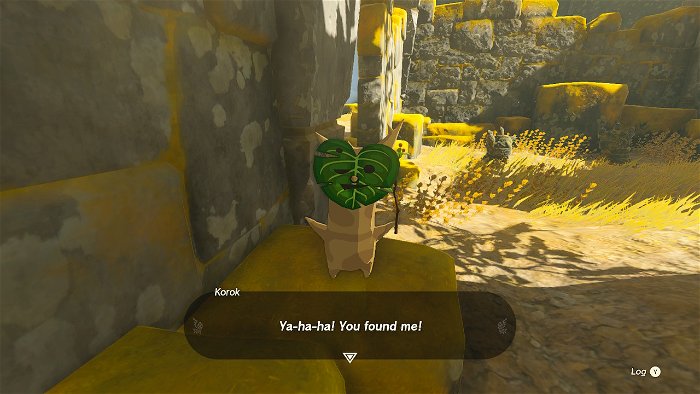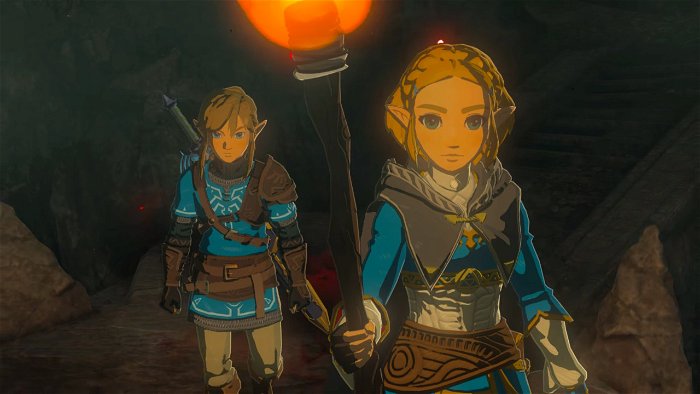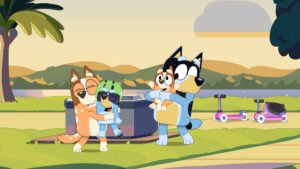The biggest game of the year is a week old now—here’s what we’re enjoying (and not enjoying) about The Legend of Zelda: Tears of the Kingdom.
At long last, Nintendo drew back the curtain on its biggest title of the generation, The Legend of Zelda: Tears of the Kingdom. Remarkably, they managed to develop a massive follow-up to the Nintendo Switch’s era-defining launch title, Breath of the Wild, without divulging many details on it until the eleventh hour (and with only one considerable leak about two weeks before release).
To put it lightly, it’s already a tremendous success—with critics, with players, and commercially, selling ten million copies in three days. There’s a lot to love about it, and personally, I’ve found it hard to put down over the last week. Of course, it has some flaws or disappointing aspects as well, as no game is perfect (no matter how many perfect review scores it gets).
So now that we’ve all had a chance to explore this new version of Hyrule for ourselves let’s take stock of the highs and lows we’ve found in Tears of the Kingdom so far.

Low: Building Upon Breath of the Wild… For Worse
First things first, hey. Listen. It’s okay if Breath of the Wild didn’t check all your boxes. It was a marked departure from the usual Zelda formula, after all. Unfortunately, that means the odds are against you liking Tears of the Kingdom (and that’s okay too).
The aspects of BotW that were commonly decried are back again—biggest of all, perhaps, being breakable weapons. The Shiekah Slate’s powers have been replaced with a suite of (arguably) more interesting and general-purpose tools, but that also means that bombs are not a typical part of Link’s arsenal, and some of the other tricks you may have leaned on are gone. Like Breath before it, TotK can be rather unforgiving in the early hours until Link can conquer some challenges, gain some hearts, and upgrade his gear.

High: Building Upon Breath of the Wild… For Better
That being said, Nintendo has arguably made a sequel with more general appeal. It may use Breath of the Wild’s engine and continue its story, but the gameplay experience and story are more diverse overall. The Legend of Zelda: Tears of the Kingdom’s opening sets the stakes for a tale that bridges the gap between its predecessor’s bleak, nigh-apocalyptic version of Hyrule and more traditional Zelda experiences. It takes the familiar map and reinvents it, showing the world’s growth between games and also expanding it with the sky islands.
And while the Sheikah Slate powers are gone, Link’s new tools provide novel replacements that really allow the shrine puzzles to shine. I haven’t really missed the old suite of powers as much as I liked them. Ultrahand alone provides enough interesting ways to interact with the world, while the concept of fusing items to weapons helps compensate for having those weapons shatter regularly. (Ascend is pretty neat, too, when I remember to use it.)
Breath of the Wild didn’t feel incomplete or unrealized in its own time, but seeing how Nintendo has built upon its foundation with Tears of the Kingdom, it almost feels like it was missing something in retrospect.

Low: Deja Vu
After my second dungeon in Tears of the Kingdom, I felt a twinge of disappointment. For the uninitiated, after the game’s introductory hours, Link is tasked with checking out each of the four civilizations he journeyed to in Breath—the familiar races of Zelda lore. As I did in the first game, I went for the Zora first. The central mystery of the game (which I still won’t mention for the few who haven’t started yet) was gradually being pulled back with each step of their quest line, and I was eager to see how the next race’s experience would unravel it further.
But after clearing that second dungeon, my expository reward was…largely the same. I expected some unique insight from the Rito’s perspective, but the cutscene was a rehash of the Zola’s, with only a couple of lines and images tweaked. I also knew what my gameplay reward would be ahead of time. Of course, I’m only about fifteen hours into what promises to be a 50-60+ hour adventure, so there’s plenty of time to be astounded. At this early point, however, this was a little disheartening.

High: The Literal Height of the World
The biggest addition to Tears of the Kingdom, made abundantly clear by the events of the game’s intro, are the islands in the sky. Hyrule has a whole new dimension floating above its surface. The floating islands don’t constitute nearly as much surface area as the ground map itself, but they’re used to excellent effect. They remind me of the hidden islands awaiting in The Wind Waker’s vast seas while drawing obvious inspiration from Skyward Sword’s floating domains.
A side quest-giver mentioned that the flowers he sought might grow on an island overhead. I utilized a nearby tower to shoot Link into the sky, where I managed to land on an island and noticed one of the land masses looked remarkably like a flower… and what do you know, there happened to be pieces nearby to build a makeshift hovercraft. I ascended into the heavens on my creation, climbing to what felt like the stratosphere, only to find the flower-shaped island wasn’t what I was looking for… and there were still islands higher than that.
The verticality of Tears of the Kingdom’s Hyrule truly elevates (pun intended) the excitement of exploring it. Sometimes you can use this to your advantage and sky-dive to a new location easier than you could reach it on foot. At other times, the main quests will use floating domains as mini-dungeons in their own right, on the approach to the actual dungeons. If you were worried that TotK would simply be an “expansion pack” for Breath of the Wild, look upward to find relief.
And that’s to say, nothing of the other vertical dimension added to the map, an element that totally escaped the game’s marketing campaign. I won’t ruin the surprise for anyone else since I don’t have firsthand experience with it yet myself, but the explorable area in Tears of the Kingdom is truly impressive, especially for a Switch game.



High: Experimentation
That same spirit of creativity which made BotW‘s brief shrine challenges stimulating is back in spades in Tears of the Kingdoms‘ updated shrines—which are technically more numerous but feel less frequent to me somehow—and even into parts of the world itself. Ultrahand and the new mechanics of attaching items truly enabled Nintendo’s team to devise some fulfilling brain ticklers to scatter across the realm.
In some places, I’ve felt like Wile E. Coyote, slapping Acme components together to see if my creation can get me to the other end of the shrine, ending in some dives into abysses that would make the Looney Tunes proud. It leans into the thrill of creation that games like Minecraft have capitalized on for years, integrating naturally into the flow of Zelda gameplay and BotW’s formula.

High: The Sheer Joy of Adventure
I sought out a shrine just to secure a well-earned fast travel marker and meant to continue on my way to my real objective nearby; curiosity got the better of me, so I stuck my head into the shrine to see what was up. I found Link stripped of all his gear and presented with the challenge of clearing a room of Constructs using only the basic gear provided, and whatever I could scavenge within.
“Eh, I’ll come back later,” I muttered aloud, and turned to leave. Then, “What the hell?” I emerged victorious ten minutes later, like Link had been the star of Mad Max: Thunder Road all along.
Tears of the Kingdom nails and recaptures that sense of childhood wonder and exploration like few games before it. There’s a touch of sandbox elements from games like Minecraft and Terraria, mixed with the familiar survival-based themes of Breath of the Wild, all informed with the familiar language of Zelda games, in a world that feels familiar yet new and surprising.
These sorts of massive adventures don’t often capture that “just five more minutes” or “just one more round” mentality that many popular puzzle or mobile games rely on. Yet, Tears of the Kingdom has done just that for me—just one more shrine. I’m just going to see what lies on the other side of this hill. Let’s just check out that island right above one more time. No really, I’m going to turn it off after I see what happens when I fuse these items. What do you mean, it’s 2 AM already?
But there you have it—the things we love and dislike about The Legend of Zelda: Tears of the Kingdom thus far. We’ll surely have plenty more to discover over the coming months, so stay tuned to CGMagazine—and let us know, how do you feel about Nintendo’s new blockbuster?




